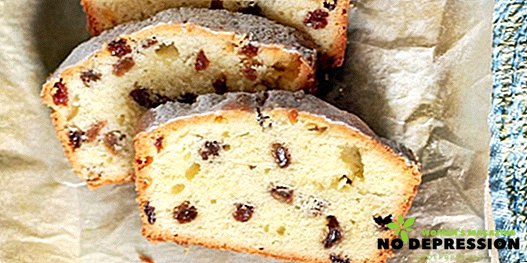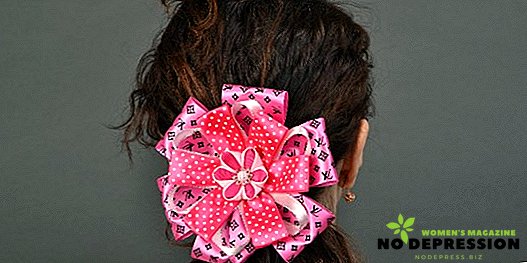A door seal is needed not only to protect your home from drafts. It also helps retain heat, protects against external sounds. When choosing a product, several points should be taken into account: type of construction, material of manufacture, type and purpose of the door.

What does the seal do?
The main function - protection from drafts. If the device does not fully cope with this task, then it can no longer be called quality. This is especially important for entrance doors, as heat insulation depends on it. Moreover, the heat-insulating functions should work in two directions, protecting both the apartment from the draft from the street and preventing the withdrawal of warm air.
Experts felt that the doors without seals can release up to 40% of the heat from the apartment, and since the prices for heating are high enough, you will have to spend a considerable amount on heating.
Another advantage is the presence of noise insulating properties, which are necessary both for metal entrance doors and for interior doors. Sometimes the front door faces a noisy road, the low level of sound insulation will not allow you to feel comfortable in your own walls due to annoying sounds.
The same applies to interior doors: if the rooms are poorly insulated, then living in the same apartment will not be able to safely do their work without risking to prevent another person.
 The quality seal also has cushioning properties. Any person faced with a situation when in the summer drafts walk through the apartment, and the doors close with a very unpleasant sound. This not only creates discomfort, but also reduces the service life of the products themselves.
The quality seal also has cushioning properties. Any person faced with a situation when in the summer drafts walk through the apartment, and the doors close with a very unpleasant sound. This not only creates discomfort, but also reduces the service life of the products themselves.
Also, the seal will help protect the apartment from unpleasant odors. For example, if something burned in the kitchen, and doors without high-quality seals, the smoke will go through all the rooms. If you get expensive and reliable products, then this problem can be avoided.
Thus, the main feature of this door element is sealing, which is especially important in the Russian climate, where the temperature “jumps” regularly.
What types of seals exist
Products are classified according to several criteria.
Type of door:
 For the front door. Most often, suitable seals are made tubular, hollow inside, which allows for maximum fit of the door - this guarantees almost 100% isolation from external “stimuli”.
For the front door. Most often, suitable seals are made tubular, hollow inside, which allows for maximum fit of the door - this guarantees almost 100% isolation from external “stimuli”.- For interior doors. There must be other requirements: you do not need to strongly protect from the environment, the aesthetic component is very important. In some cases, for example, when it comes to the bedroom, you should think about isolation.
- For plastic. Such seals are divided into a separate category, as products for PVC doors will be very different from others, and they are usually supplied with the doors themselves during installation. If you need to replace the seal, it is best to purchase it from the same manufacturer.
- For doors made of glass. If the profile is silicone, then a seal is not needed, but with an aluminum profile you need a rubber or silicone insert.
According to the materials of manufacture of the product can be from:
- rubber;
- foam rubber;
- silicone;
- thermoplastic;
- magnet;
- Felt.
By configuration, seals are:
- Ribbon. They resemble a soft cord with a width of 1 cm. They have a high level of noise insulation.
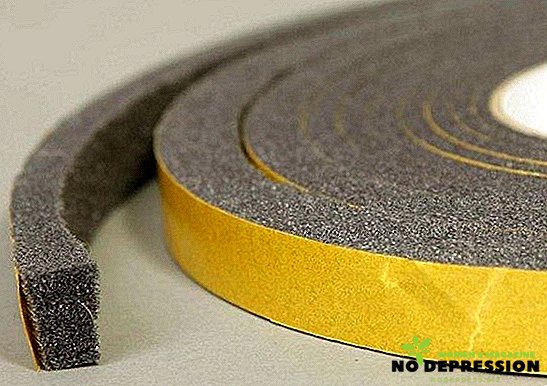
- Tubular. Despite the fact that such products are most often used for entrance doors, they have not such qualities as tape seals. They represent a small hollow tube, which is pressed when the door is closed - due to this there are no gaps between the door and the box.
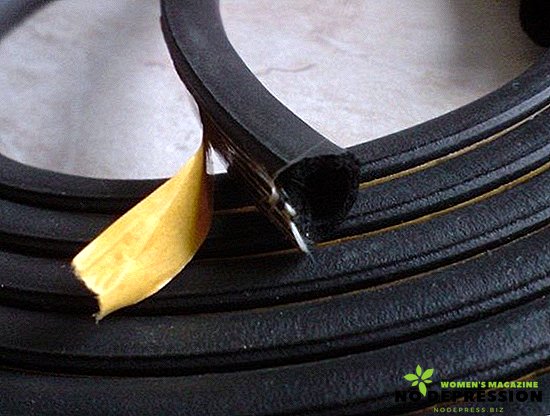
- Slot. Are made for plastic products, represent a hollow profile from soft rubber inside. On one side of the seal is a brush that fits into the groove. This reduces the impact of noise on the seal itself and is transferred to the canvas.

- Spring. Attached to the door frame. When closing the part of the seal close the gap completely. It is best to use only on flat surfaces, such as metal doors.
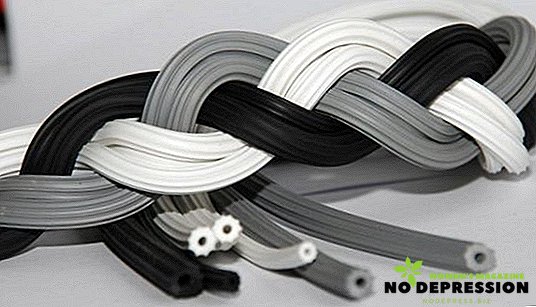
- Mortise. Used only for wooden doors. Under this seal, a special niche is cut in the door frame where the rubber product is attached.
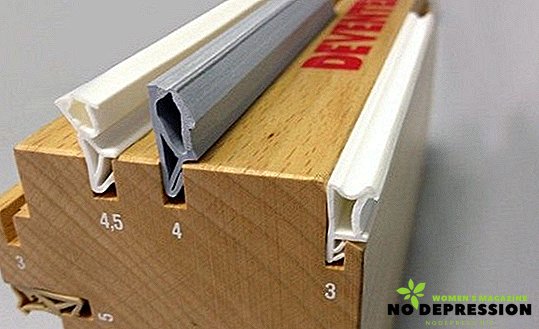
- Folding. The best option for doors, accordions, etc.
Ribbon products are rarely wider than 1 cm. This is due to the fact that this width is considered the most optimal when attaching the seal to both the door frame and the door itself. Tubular products have practically similar characteristics, but much depends on the material from which they are made.
By the way, it often happens that for some doors it is possible to choose only a specific version of the seal. Because this point should be taken into account when buying doors - it is better to choose the model to which almost all seals fit.
A versatile option can be called a complex profile made of rubber - this product is suitable for both entrance and interior doors. It can be produced in various versions: to be soft, dense, the width of the seal is about 10 mm.
Foam rubber options for entrance doors should not be used, since this is not the most durable material and can quickly become unusable. Because this material is better to choose for the doors with the lowest load, for example, in the hall.
 But magnetic designs are used only for entrance doors: special magnetic inserts on a soft rubber profile will ensure maximum adhesion, which will perfectly protect against heat leakage.
But magnetic designs are used only for entrance doors: special magnetic inserts on a soft rubber profile will ensure maximum adhesion, which will perfectly protect against heat leakage.
The only thing that may be difficult is to install them, since you need to select the inserts in size as precisely as possible - otherwise the door simply won't close.
Another topical option can be called colorless silicone insulation. It is believed that they are best suited for glass doors, but this is not so: it can be used for wooden products, and for PVC structures.
The texture seals can be:
- Flexible, which are usually made of materials such as rubber, magnet and silicone.
- Liquid - most often they are used for entrance doors. They are a liquid foam rubber, which is applied with a special tool on the necessary areas.
- Pile. They are familiar to many people, because 20 years ago only this material was presented on the market. Today, in stores you can find ribbons from both pure felt and artificial.
Different products and location:
- Thresholds. Ideal if the door does not provide thresholds.
- Contour. Such products are mounted around the perimeter of the door or the box itself, closing the gap.
There are also so-called fire seals. It is a substance that, when heated, turns into a foam that prevents the penetration of smoke.
Main dimensions of products
Depending on the type, the sizes of the seals are different. Moreover, the optimal size depends on the thickness of the gap. An important role is played by the door footage and its purpose. For example, for entrance doors it is better to choose a wide and tight option.
In some cases, you should use rubber profiles of complex configuration, which are suitable for interior doors and entrance doors. Each profile has its own shape (C, P, O, etc.), which fits a specific gap size:
- Products of forms C, K, E are suitable for gaps no thicker than 3 mm.
- Forms P and V - up to 5 mm.
- Forms O and D will help close the gap to 7 mm.
When calculating the right amount of material, remember that regardless of the type of the door, you will need at least 6 m of the seal, and a soft version is better to take with a margin of at least 1 m, because if part of the profile already installed becomes unusable, there will always be a replacement material.
Seals vary in thickness. For example, for interior doors, you can choose thin and soft profiles, but for the entrance structure of such a product will not be enough - you need to choose a more "powerful" seal.
Choosing the best option for sealing doors
To select a material, you should remember about its characteristics, take them into account. Let's take a little more detail:
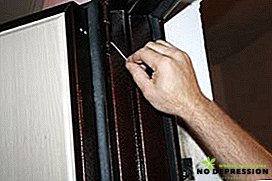 Rubber products are considered the most popular. This is due to the fact that they tolerate temperature fluctuations perfectly, they are not afraid of rot, fungus, and bacteria. Be sure to treat the product with a special antibacterial composition.
Rubber products are considered the most popular. This is due to the fact that they tolerate temperature fluctuations perfectly, they are not afraid of rot, fungus, and bacteria. Be sure to treat the product with a special antibacterial composition.- A good alternative is a silicone gasket. Its advantages when working with glass doors include the fact that it adheres tightly to the surface, does not crack under the influence of temperatures, and does not peel off. Ideal for bathrooms.
- A special place for the TEN-seals, which are perfectly adapted to external conditions. The main thing is to purchase the product from a reliable manufacturer: only in this case you can guarantee reliability, long service life of the product, resistance to stress.
- Felt is made of natural material, perfectly protects from the cold, making it incredibly popular. During the entire service life does not lose its properties, retains heat, is fireproof.
Seal Tips
Before you pay for the purchase, be sure to check the material:
- Feel the cord: it should not be sticky, deformed - these are the main signs of a poor-quality product. Refuse from such a purchase, even if you are attracted by the cost: such a product will not last too long.
- When choosing a seal, which is fixed on the glue, be sure to specify which solution to use. This is especially important when choosing a product for the entrance door, since both the glue and the sealer should protect the environment from the maximum. The best option is silicone sealant.
Also read the label carefully: there is often some information there that sellers will not tell you about. If you choose a sealant for PVC doors, they should be as tight as for the entrance doors. This is due to the need to protect the apartment from external influence.
For a wooden structure it is better to choose a silicone seal. Also for them, you can choose mortise products that will be almost invisible. Let this option and more expensive than the use of silicone, but it is more reliable, durable and, if necessary, replacement will not spoil the appearance of the product.
As you can see, choosing a seal is not so simple: you need to take into account many parameters, including the size of the material, the purpose of the door, and even the color, which should match the color of the door.


 For the front door. Most often, suitable seals are made tubular, hollow inside, which allows for maximum fit of the door - this guarantees almost 100% isolation from external “stimuli”.
For the front door. Most often, suitable seals are made tubular, hollow inside, which allows for maximum fit of the door - this guarantees almost 100% isolation from external “stimuli”.




 Rubber products are considered the most popular. This is due to the fact that they tolerate temperature fluctuations perfectly, they are not afraid of rot, fungus, and bacteria. Be sure to treat the product with a special antibacterial composition.
Rubber products are considered the most popular. This is due to the fact that they tolerate temperature fluctuations perfectly, they are not afraid of rot, fungus, and bacteria. Be sure to treat the product with a special antibacterial composition.

